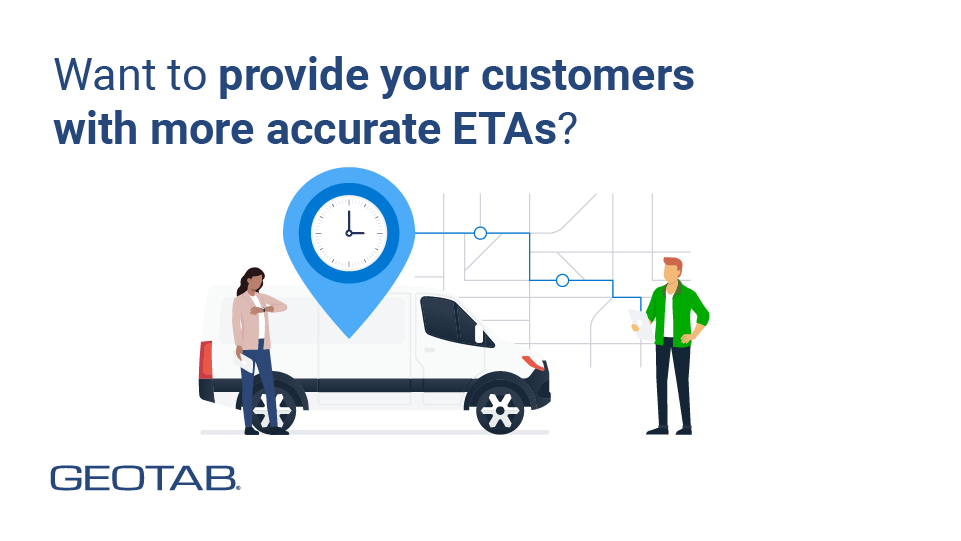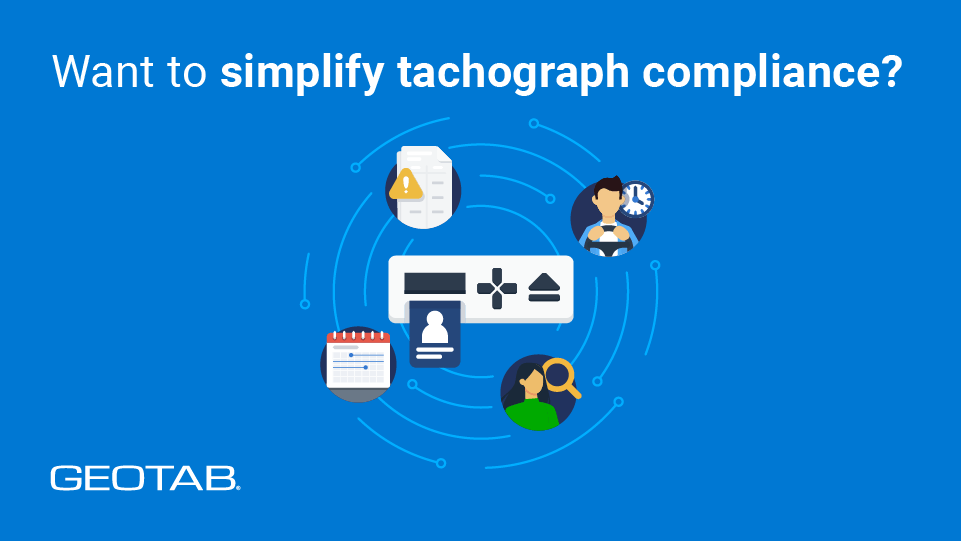Understanding HGV checks
ABS (Anti-lock Braking System) improves vehicle safety by preventing wheel lock-up, enhancing control during braking, and maintaining stability.
October 23, 2024
•3 minute read

Key Insights
Prioritise HGV safety with thorough checks and efficient defect reporting. Streamline compliance and improve vehicle health with Geotab Drive.
Heavy goods vehicles (HGVs) are the workhorses of the transportation and logistics sector, moving vast quantities of goods and materials across the country. Due to their size and weight, they can pose a significant risk to other road users if they aren’t properly maintained and operated. For the safety of all road users, it’s the collective responsibility of drivers, vehicle operators and fleet managers to ensure that the vehicles they are operating are safe to drive.
This article looks at the core HGV checks and inspections that must be carried out to keep their trucks in safe working condition.
First use inspection
Before a newly acquired vehicle or trailer is used on a public highway, the vehicle operator must carry out a “first-use inspection”. The purpose of this inspection is to satisfy the operator that the new equipment is safe and roadworthy.
The daily walkaround check
Drivers are legally responsible for the condition of the HGV they’re driving, so they must carry out a walkaround check before the start of each shift to ensure the vehicle is roadworthy. If two drivers use the same vehicle in a day, then both drivers must undertake a walkaround check.
The driver must check inside and outside of the vehicle, ascertaining the safety and functionality of all elements from wheels to mirrors, cameras, lights, seatbelts and more.
All of the elements checked should be recorded in a form, with ‘nil’ entered where no defects were found. If any defects are detected, they should be clearly detailed, together with the driver’s assessment of the severity of the fault. Defects must be reported to a responsible person with sufficient authority to ensure that any appropriate action is taken, which might include taking the vehicle off the road.
Defect checking during the journey
If your drivers become aware of defects during their shift, they must pull over safely and report the defect. Any dangerous defects must be fixed before continuing on the journey. Driving an HGV that is in a dangerous condition can result in an unlimited fine or prison sentence.
Random DVSA checks
The police and Driver and Vehicle Standards Agency (DVSA) officers can stop your drivers at any time to complete checks on your vehicles. They may also ask for a record of the day’s walkaround check. As a result of a police or DVSA check, the vehicle may be prevented from operating until the problems are fixed, or the vehicle operator may be issued with a fine.
Scheduled safety inspections
Safety inspections form part of the overall maintenance plan of a vehicle, and their purpose is to assess the integrity of safety-critical items and other items that may affect the vehicle’s roadworthiness and the environment. Safety inspection frequencies normally range between 4 to 13 weeks, with the DVSA advising that older and harder working vehicles be checked more frequently.
How fleets can streamline the defect reporting process
To improve the efficiency of daily walkaround checks, and the defect reporting & resolution process, many fleets use fleet maintenance software, together with mobile applications for their drivers to log the results of their daily HGV checks. The absence or presence of defects is entered into the driver’s mobile application, and this information is automatically uploaded to the fleet maintenance software when the driver has data connectivity. This streamlined system produces a clear audit trail and helps the fleet manager and workshop to spot problems earlier.
The benefits of Geotab Drive for logging daily walkaround checks
When your drivers use Geotab Drive together with MyGeotab to record their daily walkaround checks, your fleet maintenance system can be instantly optimised:
- Improved safety: Since defects are automatically available on the central fleet management platform after the driver has completed their inspection, any necessary maintenance can be planned immediately, before minor issues escalate into those that could lead to an accident.
- Streamlined compliance: HGV checks are automatically saved into the fleet maintenance system, preventing the risk of paper-based defect records being misplaced. The risk of data input error is also greatly reduced since there is no double-inputting, helping to ensure that your fleet complies with all relevant regulations and standards.
- Reduced administrative burden: Since the driver defect check records are stored automatically, there is no longer any need for an administrator to transcribe defect information into the fleet maintenance system, saving valuable administrative time.
- Improved vehicle health: With a more streamlined defect resolution system, minor issues are detected and repaired before they become major problems, optimising vehicle health and saving time and money on expensive repairs.
Want to streamline your HGV safety check process?
Learn how you can improve the integrity and efficiency of your defect reporting process by integrating Google Drive with MyGeotab’s fleet maintenance software
Other Stories

A Guide to the Estimated Time of Arrival (ETA)
October 7, 2024
2 minute read

Guide to digital tachograph cards
October 7, 2024
3 minute read
-EN-NA-final-July24_1x-04.jpg)
August 9, 2024
2 minute read
